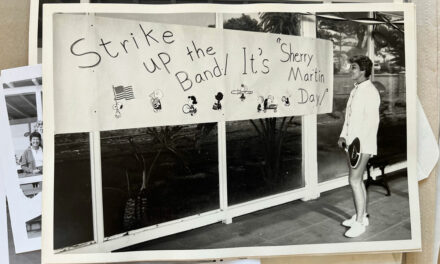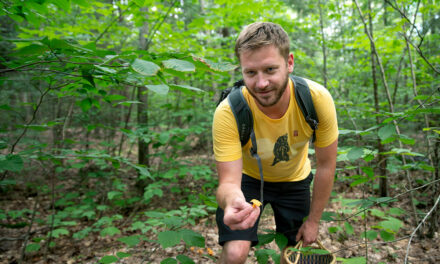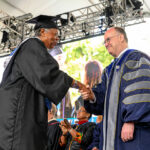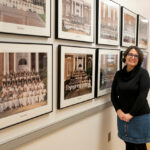
A Pilgrimage to Justice
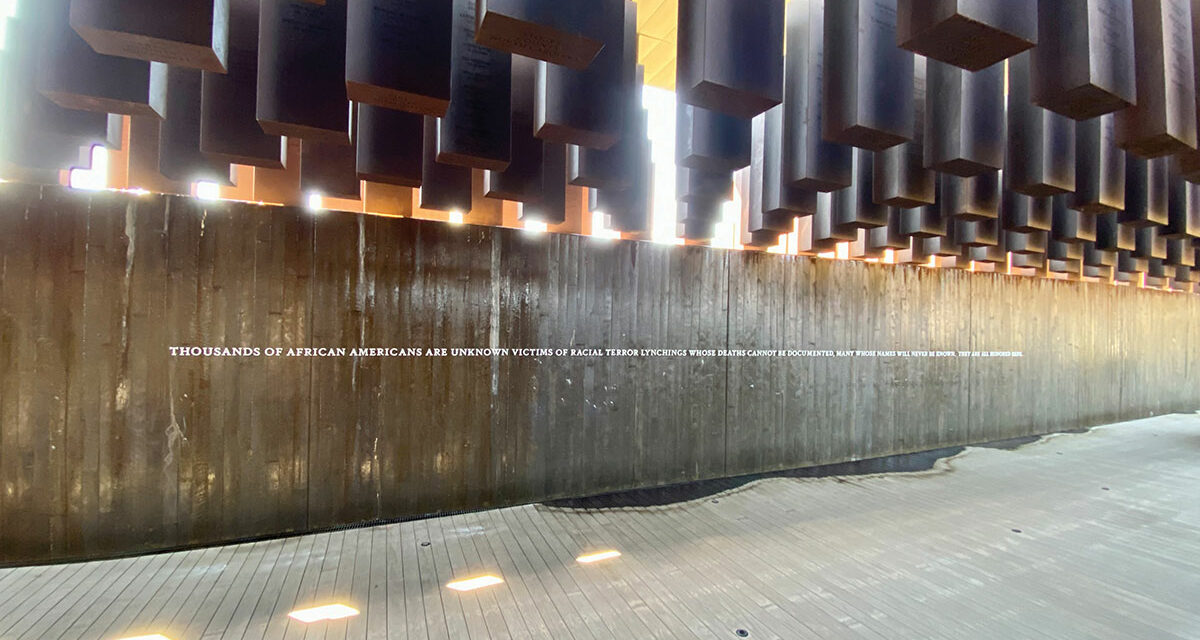
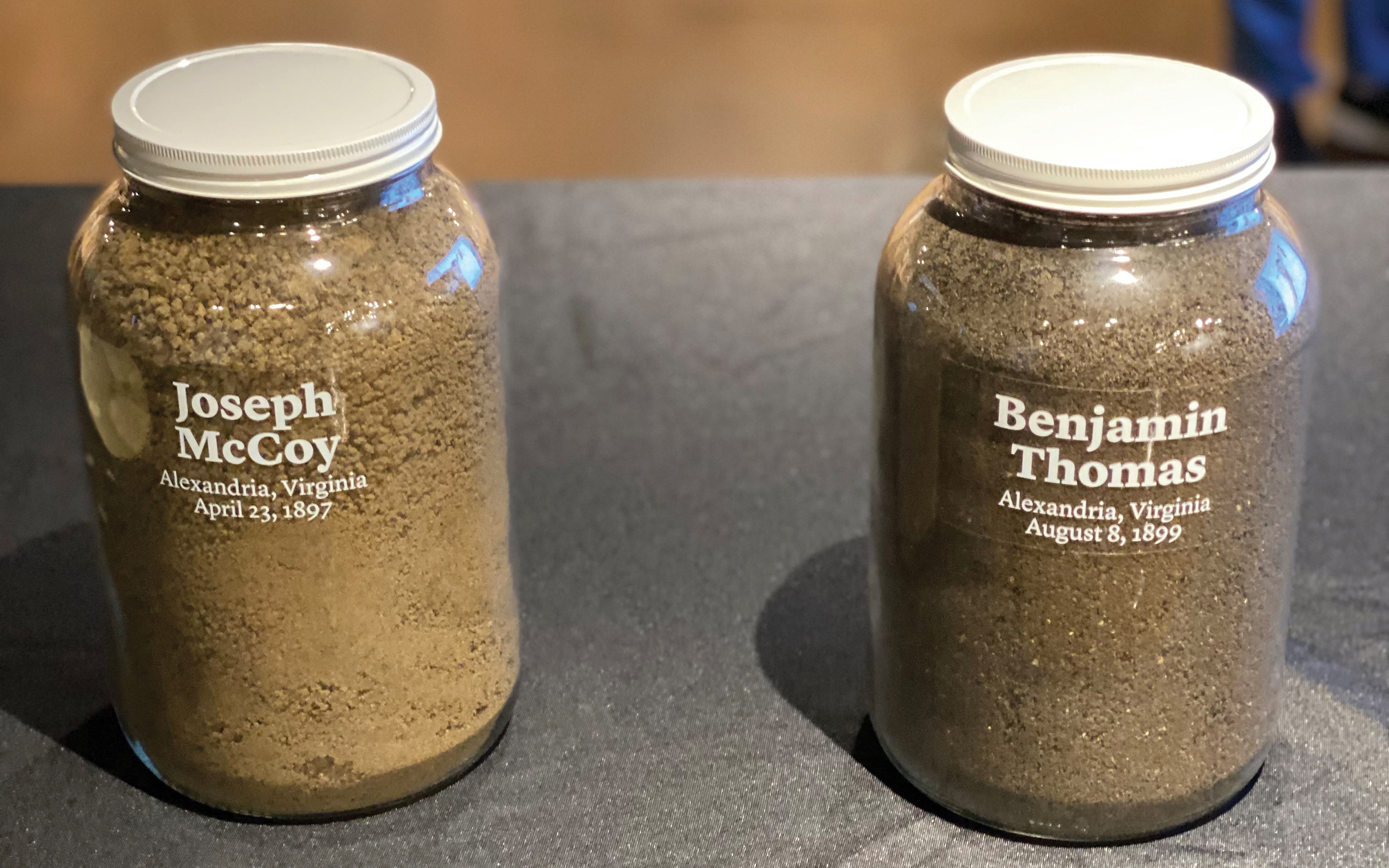
Pilgrimage to Justice
The Alexandria Remembrance Project Pilgrimage to Montgomery, Alabama
In October 2022, KiKi Davis (Director of Institutional Equity and Diversity), Joe Wenger (Associate Director of Institutional Equity and Diversity), and David Yee (Director of Service Learning and Community Engagement) had the unique privilege of joining the Alexandria Remembrance Project Pilgrimage to Montgomery, Ala. Here they offer their reflections on this powerful experience.
INTRODUCTION BY JOE WENGER
To quote the Alexandria website: “The Alexandria Community Remembrance Project (ACRP) is a city-wide initiative dedicated to helping Alexandria understand its history of racial terror hate crimes and to work toward creating a welcoming community bound by equity and inclusion.”
The pilgrimage was a culmination of years of preparation resulting in the Soil Collection Project, in which soil was collected from Alexandria to commemorate the lives of Joseph McCoy and Benjamin Thomas, two young Black men who were lynched in the city in the late 1800s. On Saturday, September 24, the ACRP held a Soil Collection Ceremony in Market Square, mere yards from where both Joseph and Benjamin were murdered by White mobs. The soil was placed in jars bearing the victims’ names. The jars were then delivered to the Equal Justice Initiative (EJI) in Montgomery, where they were added to the hundreds of other jars collected from all over the country for similar reasons. While the centerpiece of the pilgrimage was the delivery of the soil to EJI and time at EJI’s marquee institutions–the National Memorial of Peace and Justice and the Legacy Museum–we spent two more days in Montgomery and Selma, Alabama, visiting sites important to the story of the fight for racial justice and civil rights. What follows are the personal reflections of the three Saints that joined the pilgrimage.
KIKI DAVIS
Director of Institutional Equity and Diversity
I have been a diversity practitioner for almost 20 years; I have been Black all my life. I have worked in and with many schools from coast to coast. I’ve worked alongside heads of school, board chairs, school psychologists, Ph.Ds, leaders, and teachers from almost every discipline. I have also experienced small town USA where I was called the N-Word at nine years old, followed in department stores on more than one occasion, told to go back where I came from, and admonished that I should be grateful for being allowed to be in my own country. In my many decades of life I have been treated with bias and indifference both professionally and personally. Trauma is not new to me. Dissecting and compartmentalizing my experiences has also become a skill that I have mastered over the years in order to be the best of who I need to be at work and at home.
So I knew that this trip, whose purpose was only a part of why I chose to participate, would impact me both professionally and personally. Yet, I admit that what I experienced for four days in Alabama, I could not have predicted or prepared for, from the National Memorial for Peace & Justice to the Legacy Museum to a day in Selma. My metamorphosis—from acknowledging myself first as an equity educator, then as a program participant, and finally to a descendant of the racially terrorized whose legacy still impacts so many—evolved meticulously until they were no longer independent identities, but an amalgamation found derelict of proper preparation.
My reflection of this trip far exceeds the time and space allotted in this article. So I will focus on one day, knowing that it was the aggregation of all of the experiences that made this trip transformative.
The National Memorial for Peace & Justice
We arrived in Montgomery before the majority of participants, which I was told would be 160 strong. So my first glimpse of the contingent was the next morning as we gathered for breakfast before our first excursion to the memorial.
My heart immediately felt full as I looked upon the faces of so many of my community elders. In that moment, I imagined that what was a dive into history for me and my contemporaries was for them a revisiting of their past, and all the emotions that could and would resurface. I wanted to hold their hand, steady their gait, reassure them that they would not be alone. I had no way of knowing on that first day, that in the midst of such a large group, I would for the most part, feel more alone than I had ever felt before.
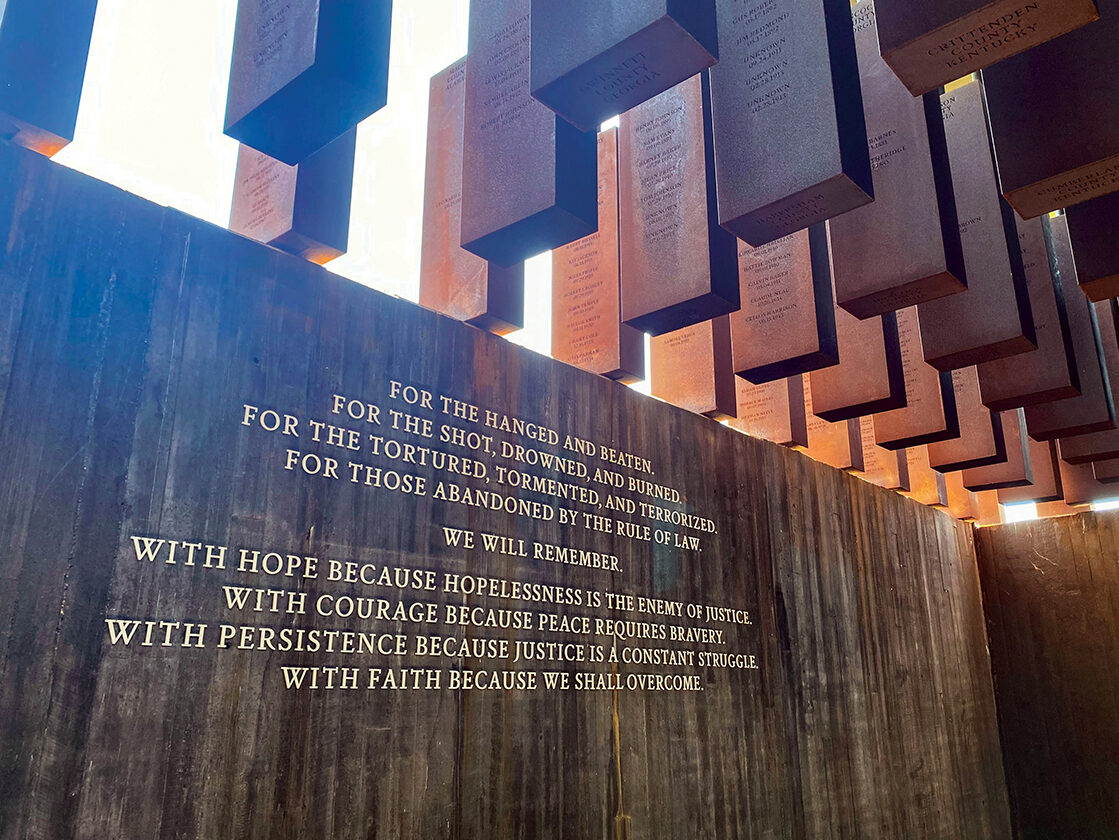
“I walked methodically through the rows, reading each name on every column, climbing over barriers and walls so as not to miss a name, not because I knew any of them, but because I wanted them to know, even in their absence, they were seen and that they mattered.”
– KiKi Davis
The Memorial was powerful, and as I walked the aisles quietly and alone, the realization of what I was viewing hit me like a ton of bricks. The bronze columns that initially stood in front of me then, systematically made their way above me, bearing the names of every county in the United States where a lynching or more of a Black person had taken place. I walked methodically through the rows, reading each name on every column, climbing over barriers and walls so as not to miss a name, not because I knew any of them, but because I wanted them to know, even in their absence, they were seen and that they mattered. Whether the inscriptions were full names, first names, nicknames, or “unknown”, I needed them to know that their life was worth my time. That who they were not able to become was not lost on me. I wanted them to somehow know that in death they were seen, valued, and validated even if, because this memorial existed, they were not in life.
I walked alone for almost an hour, tears uncontrollably streaming down my face. At some point, I stopped trying to wipe them away. At some point, I was determined to let myself feel the pain. I left the memorial with a different purpose for the trip than I had initially planned. Yes, I would make connections and design a similar trip for our school community someday, but in that moment, as the columns faded away in my rear vision, I was determined to let all the parts of me, the professional and the personal, absorb this experience. And that is how the remainder of the trip felt: heavy, like I had absorbed a lifetime of stories needing to be told, a lifetime of pain needing to be understood, a lifetime of resilience and triumph needing to be celebrated.
Back now, amongst my family and friends, I often close my eyes to see those names and remember there is still so much to do.
JOE WENGER
Associate Director of Institutional Equity and Diversity
In 2002, the city council of Montgomery, Ala., voted to change the seal of the city. The newly approved seal added a new phrase, “Birthplace of the Civil Rights Movement,” to the former seal which bore the inscription, “Cradle of the Confederacy.” While those two phrases might seem contradictory, they capture well the complex history of that city.
At first, I was overwhelmed by the sheer density of important historical moments that took place in the city. Take, for example, Dexter Avenue, one of the main thoroughfares in Montgomery. The Alabama State Capitol sits at the top of Dexter Avenue. There is a six-pointed star placed on the capitol steps marking the spot where Jefferson Davis was sworn in as the President of the Confederate States of America. If you walk a few blocks down the hill, you will pass Dexter Avenue Memorial Baptist Church where Dr. King presided from 1954 to 1960. A few blocks further down the hill, Dexter Avenue ends at Court Square Fountain. Prior to the Civil War, Court Square was the main marketplace for the selling of enslaved people, and directly across the street sits the building where they issued the telegram to fire on Fort Sumter and begin the Civil War. And that very same corner is also where Rosa Parks boarded the bus in December of 1955 and sparked the Montgomery Bus Boycott. Today the Artesian Fountain in Court Square is ringed by a Black Lives Matter mural that was painted by Michelle Browder, a contemporary artist whose mother, Aurelia Browder, was one of the named plaintiffs in Browder v. Gayle, which was the case in which the Alabama bus segregation laws were declared unconstitutional. That is the history embedded in just a few blocks on one street.
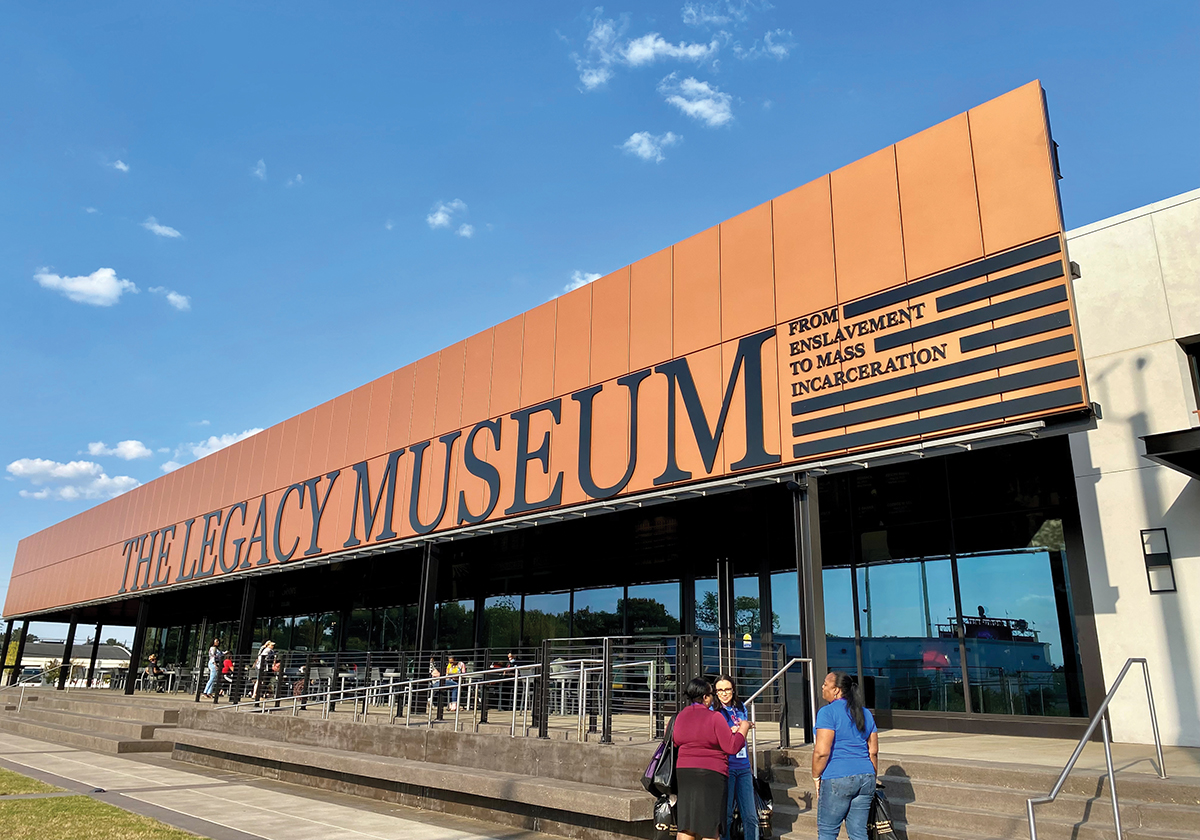
There is something unique about visiting places imbued with history. For example, I will never forget visiting the site of a Nazi concentration camp in Austria. Similarly, when I walked into the Legacy Museum Annex on the first morning in Montgomery, I immediately saw the following words printed in large white letters on an exposed brick wall: “You are standing on a site where enslaved people were warehoused.” It was a sobering reminder of the dehumanization and objectification of fellow human beings that once had taken place on the very spot where I was standing. I had similar feelings while standing on the front porch of the home where Dr. King and his wife lived during their time in Montgomery. There is still an indentation in the cement of the front porch where a bomb exploded in late January of 1956, roughly one month into the bus boycott. And visiting Selma produced the same emotional response. Having seen the footage of “Bloody Sunday” many times before, I struggled to comprehend fully what those peaceful marchers went through on that day in 1965 as I myself crossed the Edmund Pettus Bridge.
“Having seen the footage of “Bloody Sunday” many times before, I struggled to comprehend fully what those peaceful marchers went through on that day in 1965 as I myself crossed the Edmund Pettus Bridge.”
– Joe Wenger
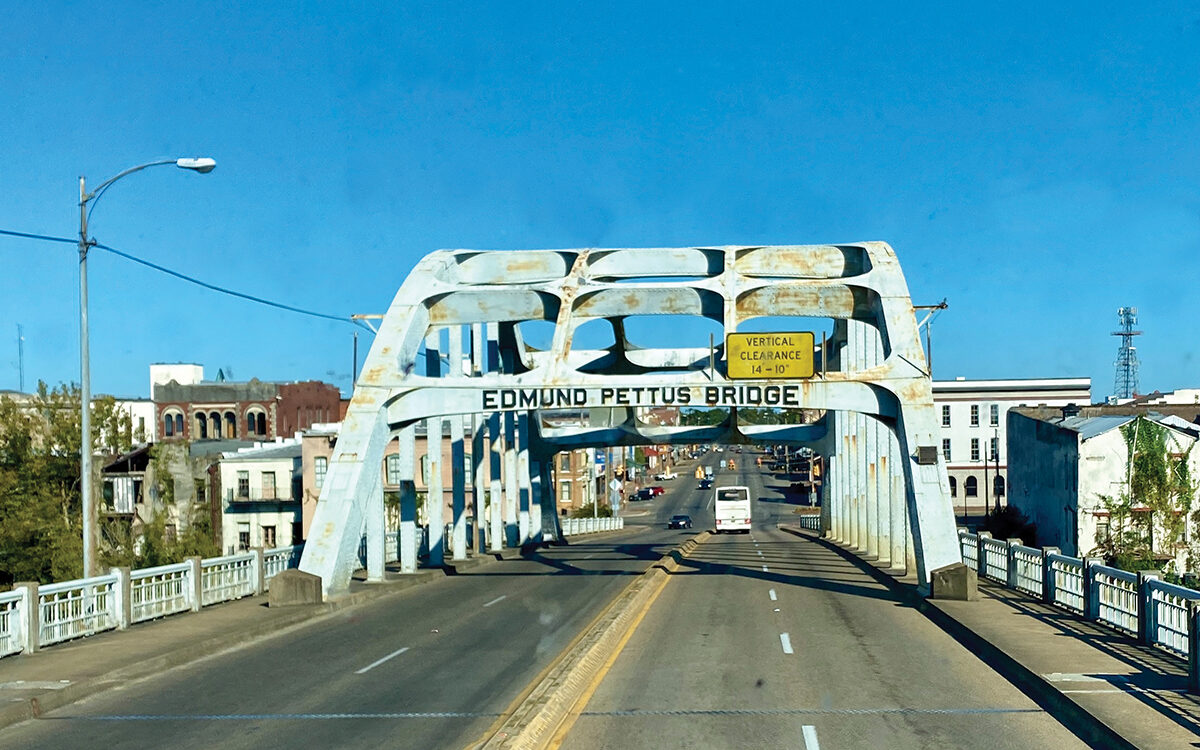
While I am still processing what I saw and what I learned on this trip, the element that continues to resonate with me more than any is the people we met. To know that Michelle Browder continues the work that her mother started half a century ago is both inspiring and disheartening—inspiring because she is continuing her mother’s fight for justice and disheartening because that justice has still yet to be achieved. But the person whose story I will carry with me forever is Lynda Blackmon Lowery. Mrs. Lowery is 72 years old now, but she was only 14 years old in March of 1965, which made her the youngest participant in the march from Selma to Montgomery. To sit down with her and listen to her stories of what she endured six decades ago–losing her mother when she was only 7-years old because the “colored blood” took too long to arrive from another part of the state, arrested and jailed nearly a dozen times by the age of 12 because of her involvement in protests, beaten by state troopers on “Bloody Sunday,” suffering injuries that required 35 stitches in her head–was a powerful reminder that the “arc of the moral universe” that Dr. King spoke of continues to “bend toward justice,” and that all of us have a part to play in making that justice a reality.
DAVID YEE
Director of Service Learning and Community Engagement
As Chip Reed, Chief-of-Staff to the Mayor of Montgomery, put it, there may not be another street in the United States that contains the highs and lows of our country’s history that Dexter Avenue does, so it’s undeniable: Montgomery and Selma carry enormous historical significance. However, the power they hold is not just in their history. They express power in the present through the people that keep the light these places can shine, and their actions spur me to remember that action is part of remembrance.
Part of this call-to-action comes from how we found ourselves going to Montgomery and Selma in the first place. Montgomery called to us as an Alexandria Community by reminding us that we have work to do. The Equal Justice Initiative’s National Memorial for Peace and Justice seeks to remind us that senseless and unjust racial violence has occurred in much of our country, but its Community Remembrance Project reminds us that the work to address this injustice must occur in the present. This pilgrimage was the start of Alexandria’s work in remembering and reckoning with past and present racial trauma, and our presence in this delegation of 160 people was a reminder that SSSAS is a part of this community in its triumphs and failures. Together, what should we do to make sure that nothing like this can happen again? How will we fulfill this pledge to the delegation of Alexandria City High School students who accompanied us to document and hold us accountable for those actions?
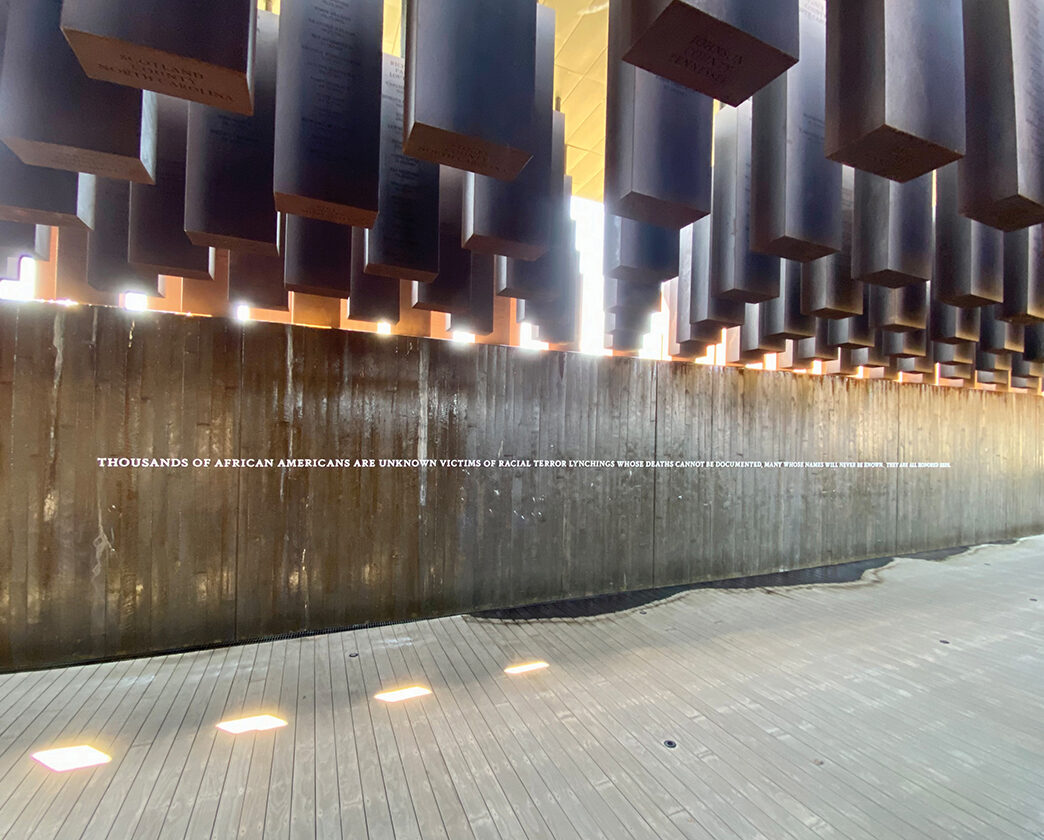
“As the events of the pilgrimage recede increasingly into the past, I, alongside all of those who live in our community, must know the lessons and stories from the pilgrimage will only stay in the past if we don’t value them enough to take action, to keep them in the present.”
– David Yee
But then the other part of this call-to-action emanates from my personal story and journey. I grew up in Chester County, Pennsylvania, and for much of my childhood, I knew and processed race. It was pretty early on in my life when I realized that being Asian-American played a pretty big role in the way that people perceived me. At the same time, this part of me was never something that was valued as much more than a deficit not worth acknowledging in my predominantly-white community. It wasn’t a problem in Pennsylvania, people would say. It’s not the South; that conversation isn’t worth having, people would say. This would, of course, contradict many of my own experiences, but over time, I grew to understand that if no one else valued these experiences, I had to find ways to make it less valuable to me in order to survive so I could focus on the things that other people did value: good grades, general charisma and easiness, the stereotypical markers of life and academic success and general “leadership.” Perhaps it’s because of this that, while I was surprised to find a marker for Chester County at the Memorial for Peace and Justice, I wasn’t surprised I hadn’t heard the story of Zachariah Walker who was lynched one town over from where I grew up. It wasn’t of value to the people who surrounded me, and so I didn’t ascribe value to looking for it. Seeing Chester County’s memorial pillar was like seeing an opaque mirror reminder of the county’s past, and within that image’s recesses, was my own past. By choosing to forget the significance of my own Asian-American experience, how might I have been complicit in the mutual forgetting of another?
These past habits are those I have spent a lot of my life since high school unlearning as murmurs from my own experience, past and present, begged to be considered and valued. I had to unlearn the ways I devalued myself in order to learn that people and their stories contain inherent power, my own included. If I can see the power of my own story, then I am a person capable of seeing the multitudinous power within those I meet and the stories they contain.
This pilgrimage was a reminder of my journey because of how many people I met who contain such multitudinous power. People like Michelle Browder, whose vision has value beyond the cost of copper for sculptures and paint for murals. She seeks to share her story, bringing young people into the mission of keeping it safe, in order to make sure that we value the contributions of those who had their bodies and freedoms taken from them so that we can have what we call gynecology today. People like sisters Lynda Blackmon Lowery and Joanne Bland who have value beyond what is recorded in books recounting the past, who remind those that travel to Montgomery and Selma that they walk on sacred ground, that even an unmarked playground lot can be the site of consequential history, that we each have a burden to carry back home not just to tell a story, but to tell their story, to act in remembrance of them. They, and almost every single person I met in Montgomery and Selma, changed the way I will see Montgomery and Selma forever. Though the stories they contain hold some amount of pain, and sometimes that pain is immense and unimaginable, I must remember that they are not just places of past pain, but present potential light to unveil the ways in which the world is known and shaped.
And so, in returning to Alexandria, I must remember that as I process and progress. However, I am only capable of remembering if I know that I am capable of monstrous forgetting. I must remember that remembering takes action, and forgetting is the absence of action, a pillar from and of my childhood’s Chester County. As the events of the pilgrimage recede increasingly into the past, I, alongside all of those who live in our community, must know the lessons and stories from the pilgrimage will only stay in the past if we don’t value them enough to take action, to keep them in the present. What can we as a community do to ensure that the stories and lessons and values of all those in Montgomery and Selma remain in the present where they belong? What can I do to keep their lights burning brightly?

